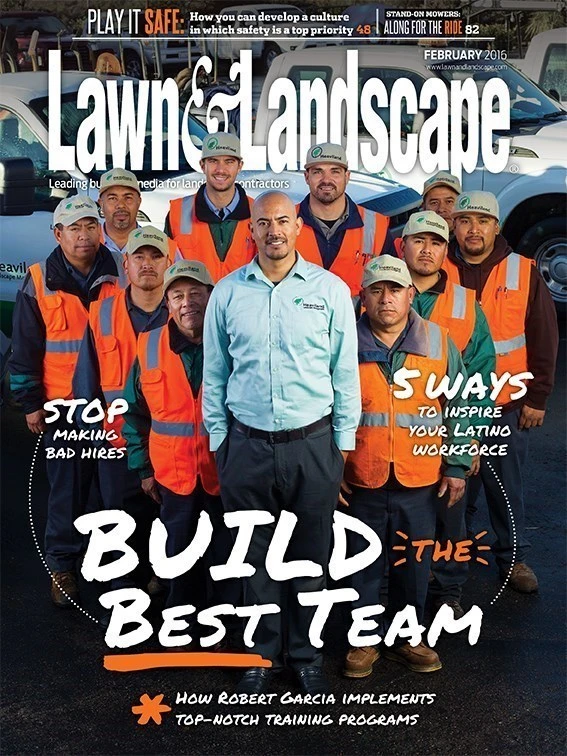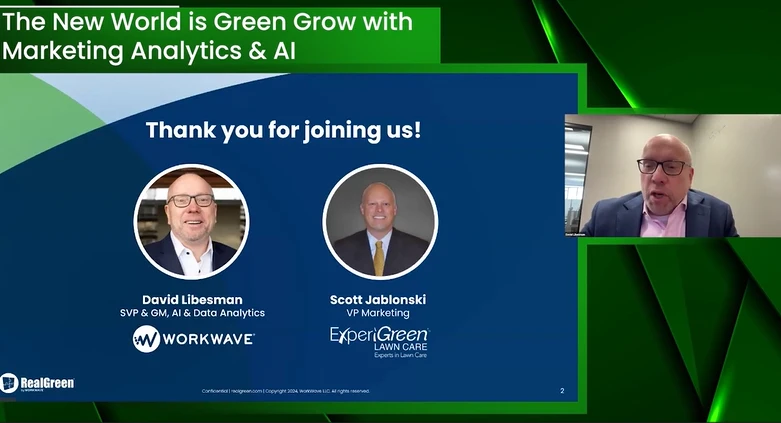
Tom DiMeco doesn’t want customers to think of Northwest Landscape Services as a landscape management company, but as a landscape asset management company.
“We’re trying to change the conversation with clients away from ‘Let’s manage your landscape,’ to ‘Let’s look at the outside of your building the same way you look at the inside of your building – as an asset that needs to be managed,’” says DiMeco, managing partner. “We don’t talk about how many times we’re going to mow the property. We want clients to understand that we’re here to reduce the cost of managing their landscape assets and extending the life of those assets.”
This is new language for most clients, at least in an outdoor setting. The commercial property owners and HOA managers that NLS serves typically talk about assets inside their buildings, from HVAC systems to windows to roofs. They set aside capital to maintain, repair and eventually replace these investments.
When it comes to landscape services, however, clients consider it a straight cost that comes along with owning a property. But DiMeco and his team try to explain why the plants, irrigation systems, retention ponds and hardscapes that make up external landscapes aren’t that different from internal assets. They talk about landscaping as an investment, not just an expense.
“This has helped our guys articulate the importance of addressing what, in the past, were hard conversations with clients about maintenance,” DiMeco says. “It gives us better dialogue about why we want to maintain a good arbor program on your property – so you don’t get into a situation where we have to do massive tree removals, which is a cost you didn’t see coming.”
With this approach, NLS meets with clients to discuss longer-term visions, planning and priorities for their properties, rather than just talking about mowing frequency. The company has even implemented a sophisticated asset mapping program that provides details about clients’ landscape assets. “It helps frame the relationship we’re going to have with that client going forward,” DiMeco says. “They see it as a long-term partnership.”
The longer timeline encourages clients to set aside funds, which unlocks reserves that were previously dedicated to capital projects inside buildings.
“We’ve basically tapped into a funding source that’s never been available to us, and in a significant way,” DiMeco says. “We’ve always had the annual allocation of landscape maintenance (certain repair costs we expect to see based on history) but we’ve really never proactively tapped into that capital funding until now.”
Structured for autonomy.
Northwest Landscape Services started in Woodinville, Washington, in 1990 with DiMeco joining in 2007. With 500 employees and $30 million in annual revenue, the company’s footprint spans six locations around the Seattle area, four around Portland, Oregon, and one in Boise, Idaho, which is operated in partnership with another company.
Company leaders knew it would be ineffective to try managing offices across the border from a centralized location, So, operations are organized into several areas overseen by supervisors who are responsible for developing and managing their own budgets. Each area operates as its own financial entity, nestled within the corporate structure.
“Since day one, we’ve created each area to be a separate revenue center with its own set of dedicated costs they can be held accountable to,” DiMeco says.
Given the subtle differences between markets throughout Washington and Oregon, this structure empowers area supervisors to manage their labor forces, cost structures and revenue-generating activities in the way they see best for their local clients.
Meanwhile, to ensure consistent standard operating procedures throughout the company, NLS launched an in-house training and certification program in 2015. Based on the company logo, which is a tree with 14 leaves, the program spans 14 modules, including customer service, integrated pest management, safety and core equipment, which cover about 30 procedures. When employees complete all of the lessons in a module through a combination of online and classroom training, they earn another leaf in their own “Tree of Excellence.”
“We have consistencies across our (standard operating procedures), but we still want an entrepreneurial environment where we have boots on the ground close to the work and the clientele, because there are subtleties in every marketplace,” he says. Each area reports to a regional district manager, who oversees three to five areas. Each district includes a main facility that houses administrative functions and business development.
Districts may also include several satellite facilities, which operate with some of their own dedicated resources, such as irrigation, and share others, such as design and enhancement, with the main facility.
“It creates route density and reduces fuel costs by putting our vehicles closer to the work,” he says.

“It also puts us in facilities outside of expensive, high-rent areas like King County, which reduces our facility costs.
“Third, it allows our workers to live where they can afford to live, and not have to commute so far to our main facility in Woodinville, where it’s getting too expensive to live.”
This model enables NLS to offer a depth of local service without being stretched too thin.
It also empowers employees at each location to work closely with local clients to build true long-term partnerships. “We’ve struck an effective balance between strong company standards and standard operating procedures and innovative, entrepreneurial management teams that are empowered to solve problems,” DiMeco says.
L&L
Explore the February 2016 Issue
Check out more from this issue and find your next story to read.
Latest from Lawn & Landscape
- SiteOne names Carrothers VP of agronomic business development
- Batman and business
- Ever-changing landscape of SEO
- Fleetio acquires Auto Integrate, raises $450M in Series D funding
- Davey Tree expands in St. Paul, promotes Ostlie to district manager
- Schill Grounds Management taps 3 for senior leadership roles
- HD Hyundai Construction Equipment North America adds to wheeled excavator lineup
- High maintenance





